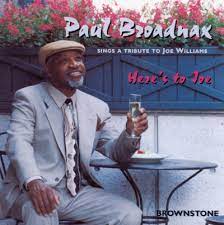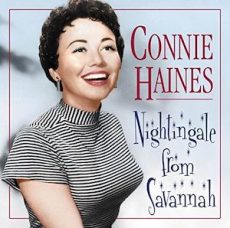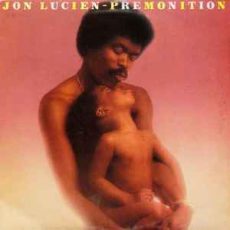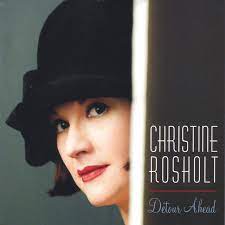
Daily Dose Of Jazz…
Shirley Crabbe was born on February 18, 1963 in New York City, New York. As a teenager she wanted to sing jazz after being inspired by a performance of Ella Fitzgerald singing the song A Tisket, A Tasket in an old Abbott and Costello movie. She pursued her dreams first to Northwestern University in Evanston, Illinois where she earned a Bachelor of Music, then returned home to study Voice at the Manhattan School of Music. During this period of study by day she traveled downtown to sing jazz in the clubs.
She has performed at festivals, jazz clubs and concert series in New York City and its surrounding area. She has appeared at some of Harlem’s best jazz rooms such as Minton’s and the Lenox Lounge, as well as the 2019 Berks Jazz Fest, Zinc Bar, Metropolitan Room and Birdland. Crabbe has opened for Abby Lincoln, recorded with Houston Person, and has performed with Harold Mabern, Jamil Nasser, Donald Vega, David Budway, Ron Blake, David Glasser, Brandon Lee, Matt Haviland, Cameron Brown, Jon Burr, Jim West, among others.
In 2011 Shirley released her debut album Home which remained on the Jazz Week Album Chart for 26 weeks. Her sophomore project Bridges hit the Jazz Week album chart Top 50 albums. She has been the recipient of several honors and awards.
Vocalist Shirley Crabbe, who won the New York Bistro Award Winner for Outstanding Recording: Bridges in 2019, continues to performa nd record.
More Posts: bandleader,history,instrumental,jazz,music,vocal

Daily Dose Of Jazz…
Paul Broadnax was born on January 27, 1926 in Cambridge, Massachusetts to a tenor father with the Lyric Male Quartet who was also a choral director and voice teacher. She also was a dressmaker and bartered those talents to secure piano lessons for the youngster from the age of eight until he was fourteen. They moved to the Roxbury neighborhood of Boston, Massachusetts when he was very young and where he grew up.
He studied clarinet in Junior High School which allowed him to play in the marching band. His classmates were Roy Haynes, Alan Dawson and Ray Perry, and during this period in life he formed his own band. After graduating from Mechanic Arts High School he was drafted into the Army Air Forces and sent to Texas. After being a foot soldier for only two days he was assigned to Special Services as a musician. It was here that he met arranger and pianist Donn Trenner, who he would later collaborate with on a later album.
Returning to Roxbury after World War II, Paul hooked up with alto saxophonist Harold Emerson, trumpeter Buster Daniels and tenor saxophonists Doug Lee and Fred Williams. He began playing with ensembles at jazz venues throughout the region. Nat King Cole and Duke Ellington would become huge influences inhis development. In the late 1940s, Broadnax began writing arrangements for Sabby LewisIn the late 1940s, Broadnax began writing arrangements for Sabby Lewis for more than five years, and worked with Paul Gonsalves before he joined the Ellington Orchestra.
In addition to supplying arrangements for Lewis, directing his own groups and working with the Tom Kennedy and Buster Daniels bands, he played tenor, piano and sang with the Gilmore Big Band, all the while writing arrangements for the group. Setting up other sources of revenue to supplement his earnings as a musician, Broadnax attended what is now the Wentworth Institute of Technology to be certified as an airplane mechanic, and he graduated from Northeastern University with an associate’s degree in engineering. He worked at Raytheon for many years, then left to focus more on music, while also running an Amway business.
He would go on to form the Paul Champ Three featuring bassist Champlain “Champ” Jones and drummer Tony Sarni, have a regular spot on the ABC affiliate in Boston and for another group with bassist Dave Trefethen and drummer Les Harris, Jr. He would appear with among others, Cab Calloway, Dorothy Donnegan, Lionel Hampton, Clark Terry, Joe Williams, and Jimmy Witherspoon. Vocalist and pianist Paul Broadnax, who in 2003 was chosen as Musician of the Year by the Boston Musicians’ Association, transitioned on August 1, 2018.
More Posts: bandleader,history,instrumental,jazz,music,piano,vocal

Daily Dose Of Jazz…
Connie Haines was born Yvonne Marie Antoinette Jasme on January 20, 1921 in Savannah, Georgia. She began performing at age four as a singer in Pick Malone’s Saucy Baby Show in her hometown and by age 9 had a regular radio show performing as Baby Yvonne Marie, the Little Princess of the Air. Her professional debut in New York City came at the Roxy Theatre when she was 14.
After gaining regional successes and winning the Major Bowes contest, she was hired by Harry James, who asked her to change her name. She did and went on to become the lead singer on The Abbott and Costello Show from 1942 to 1946. She later joined Tommy Dorsey, and Haines credited him with further developing her style.
In the early 1950s, Haines had a program, Connie Haines Entertains, did a television show with Frankie Laine, and had her own TV program, the Connie Haines Show. During this period she joined Jane Russell, Beryl Davis and Della Russell to do an impromptu performance of the spiritual Do Lord which led to a recording contract, gospel recordings and appearances of The Colgate Comedy Hour and the Arthur Murray program on television
She became part of Motown Records in 1965 becoming one of the first white singers to record for the label. She recorded 14 songs written by Smokey Robinson, including her 1965 release What’s Easy For Two Is Hard For One previously recorded by Mary Wells, and the first version of For Once in My Life, which wasn’t released until 2015.
In 1969, Haines became hostess of the Prize Movie weekday broadcast on Channel 7 in San Francisco, California. In 1980, she performed on “G.I. Jive,” a television musical special produced by PBS for its fundraising drive. Vocalist Connie Haines, who performed in a number of films, transitioned of myasthenia gravis on September 22, 2008 at age 87.
More Posts: bandleader,history,instrumental,jazz,music,vocal

Daily Dose Of Jazz…
Lucien Leopold Harrigan, professionally known as Jon Lucien was born on January 8, 1942 in Tortola in the British Virgin Islands but was raised in St. Thomas. His father was a musician whose main instrument was a three-coursed Latin guitar-like chordophone known as a Tres. As a teenager, he played bass in his father’s band.
During the 1960s he moved to New York City and while performing at a party, he was discovered by an executive from RCA. He released his debut album (I Am Now in 1970 with a mix of pop and jazz standards. His sophomore album, Rashida, contained only songs written by Lucien, with Lady Love receiving radio airplay, and Dave Grusin receiving a Grammy Award nomination for his arrangements. He went on to record two albums for Columbia and made guest appearances on Yesterday’s Dreams by Alphonso Johnson and Mr. Gone by Weather Report.
After his daughter drowned in 1980 Jon spent much of the decade struggling with drug addiction. He returned to music in the Nineties with the albums Listen Love and Mother Nature’s Son. When a second daughter died tragically in the crash of TWA Flight 800, Lucien dedicated his album Endless Love to her.
Vocalist and composer Jon Lucien transitioned from respiratory failure in Orlando, Florida on August 18, 2007.
More Posts: bandleader,history,instrumental,jazz,music,vocal

Daily Dose Of Jazz…
Christine Rosholt was born January 3, 1965 in Minneapolis, Minnesota. Graduating from the Minneapolis Children’s Theater Company & School, she went on to earn a bachelor’s degree in performance art and photography from the Art Institute of Chicago.
Her training in theater helped her become adept at working and holding a room. She was a consummate entertainer, connecting instantly with her audience, bantering with her band, telling stories, laughing at herself.
She first appeared in theaters as an actress and singer. By the early 2000s she began performing as a jazz vocalist in clubs in her hometown, as the band singer of Beasley’s Big Band. Influences from Anita O’Day, Ella Fitzgerald, Billie Holiday, Blossom Dearie and Frank Sinatra were prevalent in her delivery.
She recorded and released three full-length CDs between 2006 and 2011, Detour Ahead, Lipstick: Live at the Dakota, and Pazz with British songwriter Kevin Hall, featuring a new direction blending pop, jazz and R&B.
Beyond a packed performance schedule which took her across the twin cities and as far as Fargo, or cramming in rehearsals for fundraisers, she was an avid volunteer, activist, committee member, craftspeople recruiter. Vocalist Christine Rosholt transitioned suddenly on December 27, 2011 in Minneapolis.
More Posts: bandleader,history,instrumental,jazz,music,vocal



